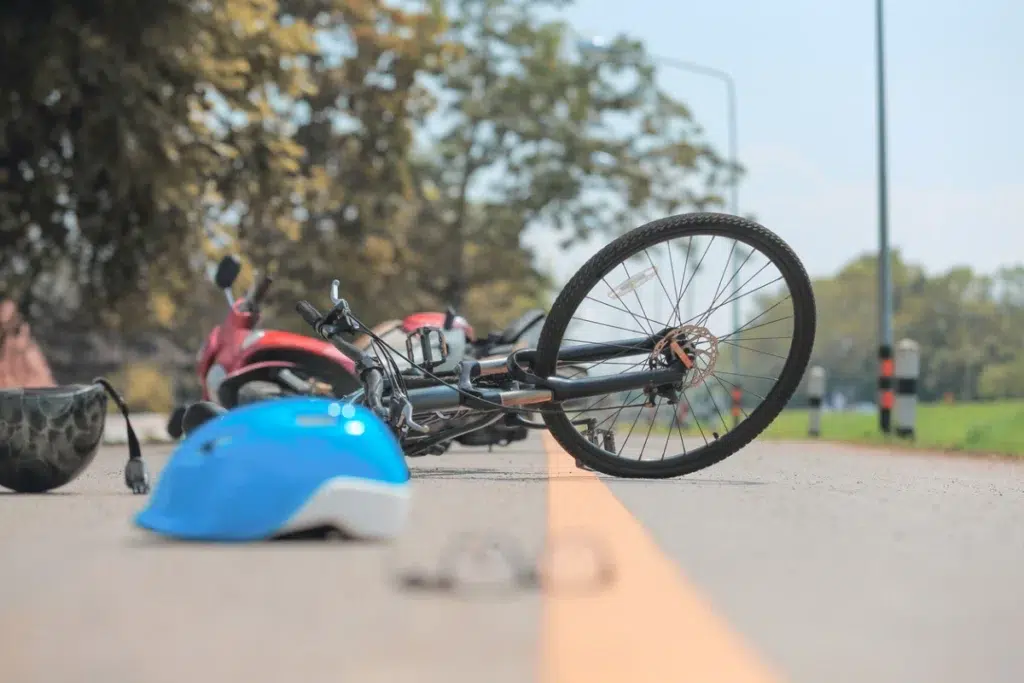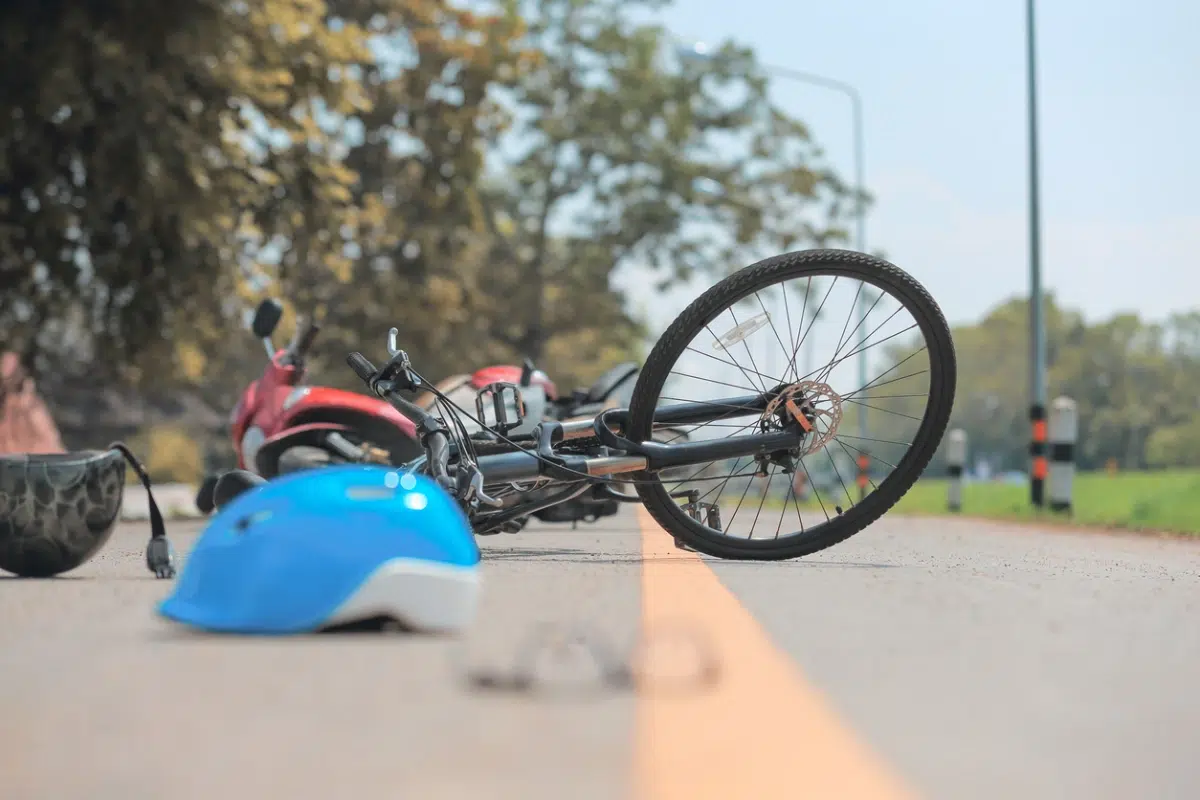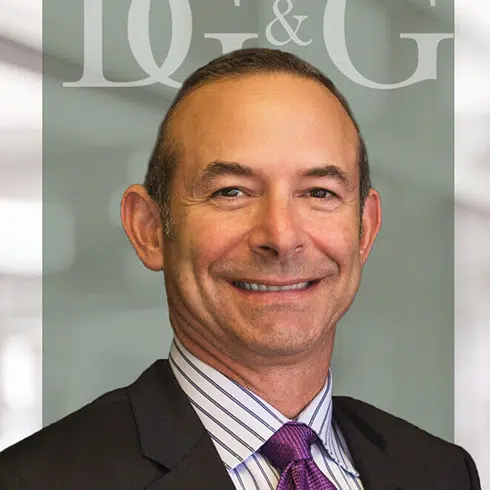
Motorcycles offer a unique sense of freedom and exhilaration, but they also come with inherent risks. Unlike occupants of cars or trucks, motorcyclists have little to no physical protection in the event of a collision, making them particularly vulnerable to severe injuries.
If you or a loved one has been involved in a motorcycle accident, understanding the prevalence of these incidents, their common causes, and your legal options is crucial. At Delfino, Green, & Green, our experienced motorcycle accident attorneys are dedicated to helping victims of motorcycle crashes in San Francisco and throughout California seek the justice and compensation they deserve.
We understand the complexities of these cases and are prepared to advocate fiercely on your behalf. To learn more about how we can assist you, visit our dedicated page on motorcycle accidents. You can also gain insight into the legal process by reviewing what to expect in a motorcycle accident lawsuit. When you’re ready to discuss your specific situation, don’t hesitate to reach out to us for a consultation.
How Common Are Motorcycle Accidents?
Motorcycle accidents are a significant concern on roadways across the United States. While motorcycles make up a relatively small percentage of all registered vehicles, motorcyclists are disproportionately represented in traffic fatalities and serious injuries. This disparity highlights the heightened vulnerability of riders.
According to national data, motorcycle fatalities accounted for approximately 15% of all traffic fatalities in the US, despite motorcycles comprising only about 3% of all registered vehicles. This translates to thousands of lives lost and tens of thousands of injuries each year. The sheer number of incidents underscores that motorcycle accidents are, unfortunately, a common occurrence.
San Francisco, with its dense urban environment and year-round riding weather, sees its share of motorcycle accidents. While the number of fatal accidents in the city has remained relatively steady in recent years, they are still far too frequent.
Nationwide Data on Motorcycle Accidents
The statistics on motorcycle accidents across the United States paint a stark picture of the risks involved in motorcycling. While the exact numbers can fluctuate year to year, the overall trend reveals a persistent challenge in ensuring motorcyclist safety.
Key national trends and statistics include:
- Disproportionate Representation: As mentioned, motorcyclists are significantly overrepresented in traffic fatalities compared to their numbers on the road.
- Fatalities by State: States like Florida, California, Texas, and Pennsylvania consistently report some of the highest numbers of motorcycle fatalities, collectively accounting for a substantial portion of all fatal crashes nationwide. This often correlates with larger populations and favorable riding weather.
- Age Demographics: While riders of all ages are involved in accidents, data suggests that riders aged 30 to 34 accounted for the most motorcycle fatalities, followed by those aged 25 to 29 and 65+.
- Time and Location: A significant portion of fatal motorcycle crashes occur in urban areas, on non-interstate roads, and during daylight hours. Weekends also see a higher percentage of fatalities compared to weekdays.
- Helmet Use: While helmet laws vary by state, studies consistently show that motorcycle helmets significantly reduce the risk of head injuries and fatalities.
- Two-Vehicle vs. Single-Vehicle Crashes: The majority of motorcyclist fatalities occur in crashes involving two vehicles, indicating that interactions with other vehicles are a primary danger.
These statistics underscore the critical need for heightened awareness, defensive riding practices, and continued efforts to improve road safety for motorcyclists across the nation.
Common Types of Motorcycle Accidents
Motorcycle crashes manifest in various forms, each presenting unique dangers to riders. Understanding these common accident types can help both motorcyclists and other drivers anticipate hazards and promote safer roadways.
- Left-Turn Accidents: This is arguably one of the most prevalent and dangerous types of motorcycle accidents. It occurs when a car or truck making a left turn at an intersection fails to see an oncoming motorcycle or misjudges its speed and distance, turning directly into the motorcyclist’s path. Due to the motorcycle’s smaller profile, drivers often claim they “didn’t see” the motorcycle.
- Lane-Splitting Accidents: Lane splitting involves a motorcyclist riding between lanes of stopped or slow-moving traffic. While it can reduce traffic congestion for motorcyclists, it carries inherent risks. Drivers may unexpectedly change lanes without checking blind spots, or a car door could open, leading to a collision.
- Unsafe Lane Changes/Blind Spot Accidents: Motorcycles can easily disappear into a vehicle’s blind spots. When drivers fail to check their mirrors and blind spots thoroughly before changing lanes, they can side-swipe or collide with a motorcyclist who is unseen.
- Rear-End Collisions: While less common for motorcyclists than other vehicles, rear-end accidents can be devastating. If a vehicle behind a motorcycle fails to stop in time, the motorcyclist can be thrown from their bike, leading to fatal injuries.
- “Dooring” Accidents: These accidents happen when a driver or passenger opens a car door into the path of an oncoming motorcyclist, often without looking. This is particularly common in urban areas with parallel-parked cars.
- Head-On Collisions: Though relatively rare overall, head-on collisions involving motorcycles are often fatal due to the immense forces involved from oncoming traffic. These can occur when a vehicle crosses the center line or enters the opposing lane of traffic.
- Collisions with Fixed Objects: Motorcyclists are more susceptible to losing control and striking a fixed object like a guardrail, utility pole, or tree, especially when reacting to road hazards or in single-vehicle accidents.
- Road Hazard Accidents: Potholes, gravel, uneven pavement, debris, or slick surfaces pose a much greater threat to motorcyclists than to larger vehicles. A minor road imperfection for a car can cause a motorcyclist to lose control and crash.
- Low-Speed Accidents: While high-speed crashes are often more severe, most motorcycle accidents, particularly those involving less experienced motorcycle riders, occur at lower speeds, such as during turns or maneuvering in traffic.
Each type of accident carries its own set of challenges for injury victims, and understanding the specific dynamics of the crash is vital for determining liability and pursuing a successful legal claim.
Factors Contributing to Motorcycle Accidents
Beyond the primary causes, several other factors can significantly contribute to the likelihood and severity of motorcycle crashes. These often interact with the direct causes to create dangerous situations.
Visibility Issues
- Motorcycle’s Small Profile: The inherent smaller size of a motorcycle makes it less noticeable to other drivers, particularly in low-light conditions, against complex backgrounds, or when obscured by another motor vehicle.
- Driver Perception Failures: Drivers of larger vehicles may suffer from “inattentional blindness,” where they simply don’t register the presence of a motorcycle even when it’s in their field of vision, especially if they are looking for cars.
- Glare and Weather: Sun glare, fog, rain, and other adverse weather conditions can severely limit visibility for all road users, but disproportionately affect riders who are more exposed, creating a higher risk of fatal motorcycle accidents.
Road Conditions
- Uneven Surfaces/Potholes: What might be a minor bump for a car can cause a biker to lose balance and control, leading to serious injuries.
- Loose Gravel/Sand: Patches of loose material on the road significantly reduce tire traction for motorcycles, leading to skids, falls, and multiple injuries.
- Oil Slicks/Spills: Even small amounts of spilled oil or other fluids can make road surfaces extremely slippery for two-wheeled vehicles.
- Grates and Manhole Covers: Metal grates, railroad tracks, and raised manhole covers can cause a motorcycle tire to lose grip or become momentarily unstable.
Motorcyclist Behavior
- Inexperience: Lack of proper training, insufficient practice, and unfamiliarity with a specific motorcycle can lead to poor judgment and control errors.
- Lack of Proper Gear: While not a major contributing factor to motorcycle crashes, not wearing a DOT-approved helmet, armored jackets, gloves, and sturdy footwear significantly increases the risk and severity of injuries in a crash.
- Speeding/Reckless Riding: While other drivers contribute, motorcyclists who ride over the speed limit or aggressive maneuvers increase their own risk of an accident and serious injuries.
- Alcohol Impaired Drivers: As with any vehicle, riding under the influence of alcohol or drugs impairs the rider’s ability to react safely and maintain control.
Other Vehicle Driver Behavior
- Distracted Driving: Texting, talking on the phone, eating, or engaging in other distractions divert a driver’s attention from the road and potential motorcyclists.
- Fatigued Driving: Drowsy drivers have slower reaction times and impaired judgment, similar to impaired drivers.
- Aggressive Driving: Drivers who tailgate, cut off, drive at unsafe speeds, or display road rage can escalate dangerous situations for motorcyclists.
Vehicle Defects
- Tire Issues: Worn, improperly inflated, or defective tires can lead to blowouts or loss of traction.
- Brake Malfunctions: Faulty brakes can severely compromise a motorcyclist’s ability to stop safely.
- Steering or Suspension Problems: Issues with the motorcycle’s handling components can lead to a loss of control.
Environmental Factors
- Weather: Rain, wind, ice, and snow make riding conditions hazardous, reducing visibility and traction.
- Time of Day/Night: Reduced visibility at night, particularly on unlit roads, contributes to accidents.
Understanding these multifaceted contributing factors is crucial for both preventing accidents and thoroughly investigating them when they occur.
Legal Recourse After a Motorcycle Accident
If you have been involved in a motorcycle accident, understanding your legal rights and the potential for recourse is paramount. Due to the severe nature of injuries often sustained by motorcyclists, pursuing compensation for damages is frequently necessary to cover medical expenses, lost wages, and pain and suffering.
The legal process typically begins with establishing negligence. In most motorcycle accident cases, the injured party (the plaintiff) must demonstrate that the other party (the defendant) acted negligently, causing the accident and resulting injuries. Negligence can take many forms, including:
- Driver Error: This is the most common form, encompassing behaviors like reckless driving, speeding, impaired driving, failing to yield, or making unsafe lane changes.
- Road Defects: If the accident was caused by a poorly maintained road, unmarked hazards, or faulty road design, a government entity responsible for the roadway might be held liable.
- Vehicle Defects: If a mechanical failure due to a manufacturing defect or improper maintenance led to the crash, the vehicle manufacturer or a repair shop could be at fault.
Once negligence is established, the next step involves proving damages. These can include:
- Economic Damages: These are quantifiable losses, such as:
- Medical bills (past and future)
- Lost wages and earning capacity
- Rehabilitation costs
- Property damage (motorcycle repair or replacement)
- Out-of-pocket expenses related to the injury
- Non-Economic Damages: These are less tangible losses but are crucial for a victim’s recovery, including:
- Pain and suffering
- Emotional distress
- Loss of enjoyment of life
- Disfigurement or permanent impairment
Understanding Comparative Negligence
It’s important to note that California operates under a comparative negligence system. This means that if you are found partially at fault for the accident, your compensation may be reduced by your percentage of fault. For example, if you are awarded $100,000 but are found 20% at fault, you would receive $80,000. This makes it vital to have strong legal representation to protect your interests. It’s also critical to be aware of California’s statute of limitations, which sets a deadline for filing a personal injury lawsuit. Contacting an attorney promptly can help ensure your rights are protected.
The process of seeking legal recourse usually involves:
- Investigation: Gathering evidence from the accident scene, including police reports, witness statements, photographs, and surveillance footage.
- Medical Treatment: Seeking immediate and ongoing medical care to document injuries and their severity.
- Demand Letter: Your attorney will typically send a demand letter to the at-fault party’s insurance company, outlining the facts of the accident and the damages sought.
- Negotiation: Most cases are resolved through an insurance claim or settlement negotiations with the insurance company.
- Lawsuit: If a fair settlement cannot be reached, a personal injury lawsuit will be filed, leading to litigation and potentially a trial.
Given the complexities of personal injury law and the potential for significant injuries in motorcycle accidents, retaining an experienced motorcycle accident attorney is crucial. They can navigate the legal system, gather necessary evidence, negotiate with insurance companies, and, if required, represent you in court to ensure you receive the maximum compensation you deserve.
How Delfino, Green & Green Can Help You
At Delfino, Green & Green, we understand the profound impact a motorcycle accident can have on your life, and we fight for your rights. Whether your accident was caused by a distracted driver, a dangerous road condition, or any other negligent act, our experienced San Francisco attorneys provide thorough investigations, aggressive advocacy, and expert negotiation to guide you through the legal process to secure maximum compensation.
The physical, emotional, and financial burdens can be overwhelming, especially when dealing with severe injuries. Our dedicated team of San Francisco motorcycle accident attorneys has a deep understanding of California’s motorcycle laws and the specific challenges faced by riders in the San Francisco Bay Area. No upfront fees; you pay only if we win. For a comprehensive overview of our personal injury services, please visit our main personal injury page.



